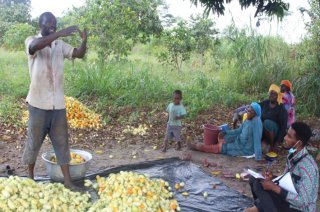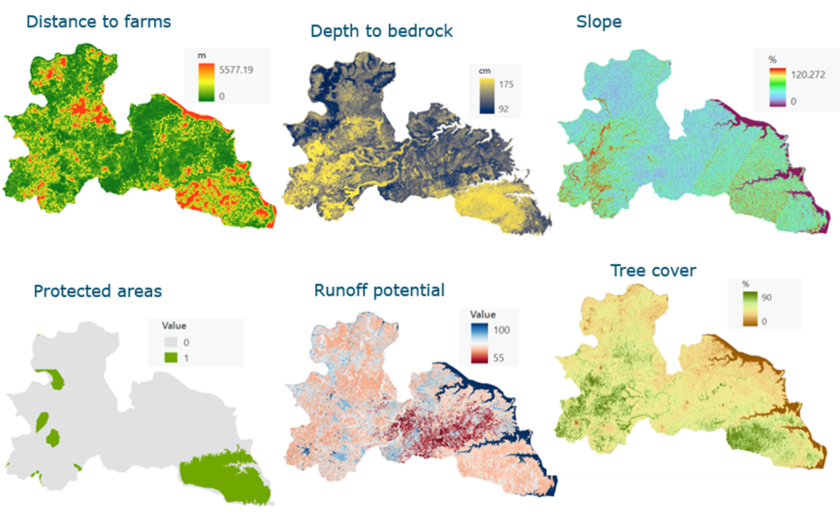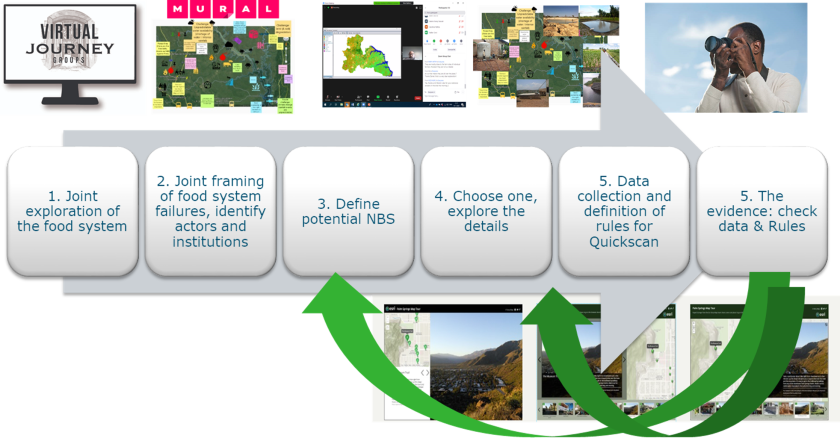
Showcase
Ghana's food basket
Bono East Region is one of Ghana’s main provider of food, and is therefore referred to as Ghana’s food basket. But for how long will this be the case? Climate change, manifested in prolonged dry spells and erratic rainfall, is making agriculture an unreliable and unprofitable investment. In theory, there is a range of nature-based solutions which could help the region to adapt to climate change while maintaining its position as food supplier. But which are to be prioritised, and how will these lead to climate resilience and circular food systems, for now and the future?
Suitable nature-based solutions
There are two nature-based solutions having high impact on the food system of Bono East Region – and for Ghana: Rainwater harvesting for irrigation and forest landscape restoration in combination with food production. If implemented in conjunction, they lead to increased water storage capacity of soils, enhanced availability of water for food production, increased soil fertility, and increased yields. They enhance resilience against climate stress, and contribute to circular land and water use.
Suitable area's
We discussed with stakeholders which factors define a landscape’s suitability for rainwater harvesting and forest landscape restoration. Suplemented with a literature review, a number of maps have been created of input indicators of rain water harvesting for irrigation like distance to farms, depth of bedrock, slope, protected areas, runoff potential and tree cover.

By combining these maps, we could identify landscape areas suitable for rainwater harvesting for irrigation and the ones for forest landscape restoration. But what will happen in future? Comparing suitability under climate change and socioeconomic scenarios (e.g. land productivity, production value and agricultural land use area, will provide relevant insights).
Implementation
There are many ways to implement rainwater harvesting for irrigation and forest landscape restoration in combination with food production, all having different impacts on the food system. How to make choices, and create spatial synergies between these? How to involve citizens, companies and governments in making these choices? What is the potential of participatory scenario analysis in this? And how could the outcomes be embedded in sectorally oriented policy frameworks, and fit into the formal spatial plans of Bono East? How to make this happen, within the practical challenges of COVID-19?
Due to the COVID-19 pandemic no field trip could be realised, hence no face-to-face participatory problem analysis, data analysis and scenario analysis could take place. An alternative methodology was developed for effective stakeholder participation, online. Read more in this blog.

In 2022, the outcomes of this exercise will be tested in the field, and evaluated in terms of outcomes as well as process. A participatory scenario assessment WITH citizens, companies and policy makers in Bono East will increase insight in the value of nature-based solutions for a climate resilient food system in Bono East, in Ghana and beyond.
Do you want to know more about nature-based solutions? Ghana's food basket is a subcase of:
